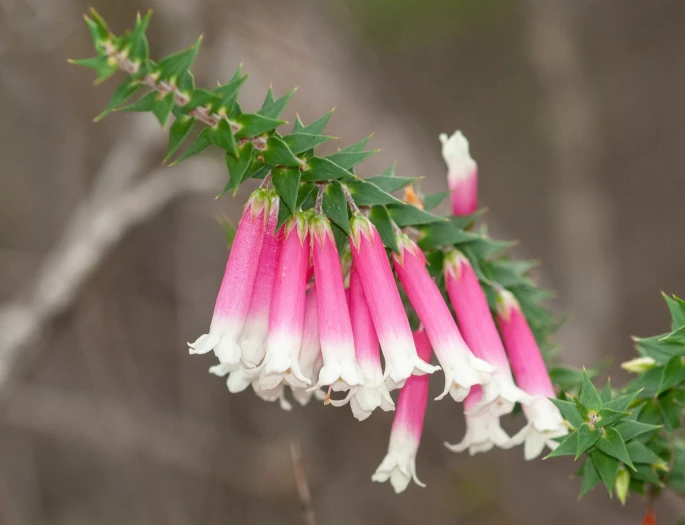Fuchsia Heath
(Epacris longiflora)
Fuchsia Heath (Epacris longiflora)
/
/

Rolf Lawrenz
CC BY 4.0
Image By:
Rolf Lawrenz
Recorded By:
Copyright:
CC BY 4.0
Copyright Notice:
Photo by: Rolf Lawrenz | License Type: CC BY 4.0 | License URL: http://creativecommons.org/licenses/by/4.0/ | Rights Holder: Rolf Lawrenz | Publisher: iNaturalist | Date Created: 2019-09-23T14:36:39-07:00 |

























Estimated Native Range
Climate Requirements for Jamestown, New York
| This Plant | Your Site | Plant Suitability for Your Location | ||
|---|---|---|---|---|
| • Precipitation | 8" - 91" | 45" | Aquatic | Aquatic |
| • High Temp. | 70°F - 100°F | 81°F | Your summer temperatures are normal for this plant. | Excellent |
| • Low Temp. | 16°F - 53°F | 15°F | Your winter temperatures may be too cold for this plant | Too cold |
This plant should grow well at your location with about N inches per year (Y minutes per month) of irrigation.
Summary
Epacris longiflora, commonly known as Fuchsia Heath or Cigarette Flower, is an evergreen shrub native to the sandy soils of coastal heathlands, cliff faces, and dry sclerophyll forests in eastern Australia, from New South Wales to southern Queensland. It typically grows to a height of 20-80 inches (50-200 cm) with an erect or spreading habit. The plant is characterized by its small, egg-shaped, pointed leaves and distinctive red tube-shaped flowers with a white tip, which are particularly showy and bloom throughout the year, peaking in winter and spring.
Fuchsia Heath is valued for its long flowering period and vibrant flowers, which add color to gardens even in cooler months. It is used in ornamental garden planting, especially in rockeries and as a border plant. In cultivation, it requires well-drained, sandy soil, and it does best in partial shade but can tolerate full sun in cooler climates. Regular watering is necessary, especially during dry periods, but overwatering should be avoided to prevent root rot. While it is generally low-maintenance, it can be susceptible to scale insects and fungal diseases in humid conditions. Fuchsia Heath is not known for aggressive roots or significant invasiveness, making it a safe choice for most garden settings.CC BY-SA 4.0
Fuchsia Heath is valued for its long flowering period and vibrant flowers, which add color to gardens even in cooler months. It is used in ornamental garden planting, especially in rockeries and as a border plant. In cultivation, it requires well-drained, sandy soil, and it does best in partial shade but can tolerate full sun in cooler climates. Regular watering is necessary, especially during dry periods, but overwatering should be avoided to prevent root rot. While it is generally low-maintenance, it can be susceptible to scale insects and fungal diseases in humid conditions. Fuchsia Heath is not known for aggressive roots or significant invasiveness, making it a safe choice for most garden settings.CC BY-SA 4.0
Plant Description
- Plant Type: Shrub
- Height: 1-3 feet
- Width: 1-3 feet
- Growth Rate: Slow
- Flower Color: Red
- Flowering Season: Spring, Summer, Fall
- Leaf Retention: Evergreen
Growth Requirements
- Sun: Full Sun, Part Shade
- Water: Medium
- Drainage: Medium, Fast
Common Uses
Bird Garden, Butterfly Garden, Groundcover, Hummingbird Garden, Low Maintenance, Potted Plant, Rock Garden, Showy Flowers
Natural Habitat
Coastal heathlands, cliff faces, and dry sclerophyll forests
Other Names
Common Names: Long-Flowered Heath, Native Fuchsia
Scientific Names: Epacris longiflora, Epacris conspicua, Epacris grandiflora, Epacris grandiflora, Epacris longiflora f. incarnata, Epacris longiflora f. miniata, Epacris longiflora f. rubra, Epacris miniata, Epacris miniata var. splendens
GBIF Accepted Name: Epacris longiflora